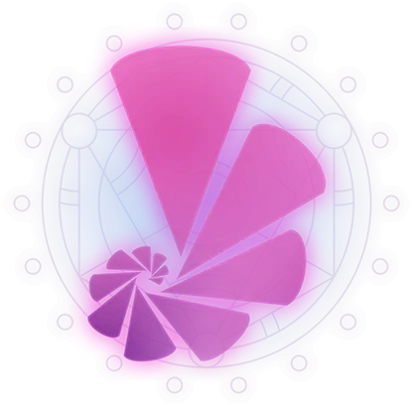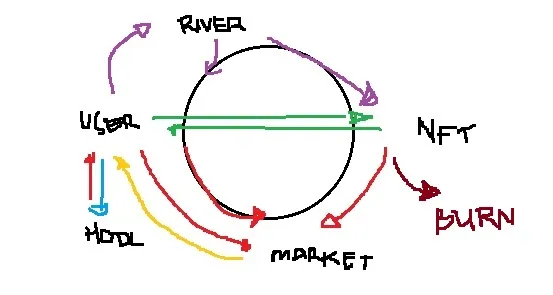
This post was inspired by from the conversation I had with @zerooc about his plans for @nyxlabs and SMANA token. It’s a small project in development few are aware of at the time of this writing which serves a separate post entirely. The trigger idea was when token burning was touched on. I didn’t expect I’d write a long post about but just a head’s up for readers.
SMANA’s use case would be the token reflecting the value of the River Styx. What goes into that frontend will be reflected back into the this platform and bridge with other blockchains too. Discussing the potential of that token in development is beyond the scope of this post. I just wanted to highlight the use of burns when it comes to the token’s distribution. Is it necessary?
I’ve seen it’s use as a means to control overabundant supply from circulation. The less tokens out there, the higher the price will be in principle. But only if people are really interested in the value of what the token opens up for them. SMANA is hinted to be used for NFTs produced by River Styx, for upgrading collectibles, and access to other features of the site. The mana is released in waves in planned time tables and has a finite supply of 10,000,000 tokens printed with more than 110,000 plus tokens already in circulation at the time of this writing.
The conceptualized use case for SMANA as a game token within the site. It’s not a token where holders hold for capital appreciation (although it can happen) or a token that gives out passive dividends. It’s a token as a reward incentive for users that participate in the activities on the River Styx. I can liken the whole River Styx experience as a social media meets MMORPG due to the gamifying elements the site promotes when interacting with it. Users can earn exp, random loot drops, NFTs, and all sorts of rewards presented in a matter you would find in an MMORPG.
Well I have elaborated the background of why this post came to be, so now I open tackle on the main subject of whether token burns are necessary or not for SMANA?
The problem I have with SMANA using a burn mechanism while using the principles of playing a game is the finite max supply of the token is that these don’t blend well together. Regular role playing games have an infinite supply of money being pumped up into the system indefinitely. As long as players keep slaying monsters or get rewarded by the system from quests, new money is put into circulation. There is no cap to how much gold can be printed and this doesn’t seem like a problem with a small player base until you get an entire server of people that generate the token daily from their activities.
If there are any old Gaiaonline users viewing this post, you would know the how much of a market hell that social site brought into existence when it tried to introduce more tokens into circulation than the assets it what pumping out. Here’s a link to some YT videos I’ve found tackling on the subject and I think it’s really a must read for anyone trying to see how corporate greed can cause a harsh domino effect on the social site’s economy where infinite gold printing meets, limited assets to buy on, more tools introduce to print more, lack of gold sinks, and where hard work is undermined.
For those that can’t be bothered to view a few minutes of video explaining what happened to Gaiaonline economy when they tried to gamify the social site here’s my short version of its history:
It’s an online forum where the major selling point is customizing your online avatar for vanity’s sake while having more features in the site where the community can interact. There are sections for games, market, and of course, the general forum (think of it as Reddit but for teens and young adults come together). Players are given gold whenever they browse the site randomly, or engage with other site features. The gold can be exchange for gold shop items or trading with players that bought monthly collectibles with real money.
Now creators realized how much effort people really put just to acquire gold to purchase those digital assets for designing their avatar. There’s an entire economy existing in the site for these which looking back I failed to appreciate the complexity behind it all. Users exchange their services like creating blogs for commission hiring, being paid for freelance work, and trading. It’s just amazing to see some users be really good entrepreneurs for their vanity at times but the point is that the player base are conditioned to hustle.
Now in comes the idea of producing cheap gold generators that release hundreds of thousands to a million gold for a tiny amount of dollars. Some users would gamble their way into these printers, luck out, and buy all rare collectibles at low prices and then inflate them. Naturally everything goes downward spiral for the economy and there was less point to do commissions and target expensive collectibles now that the prices just increase millions by the week.
Ragnarok Online was also the game that gave me more awareness about how inflation can suck for new users. When items that a re necessary to survive are priced steep and progress required shelling out more cash to get anywhere especially in PvP. The factors that contribute to inflation are the lack of content being released that it didn’t meet keep up with the demand.
Game Devs should be asking why are the players not spending more on gold sinks? Because there isn’t enough value or content to sink their money into.
The new Ragnarok Online introduced several layers of gold sinks within their game, increasing fees and decreasing fees depending on the amount of circulating gold.
To control the inflation, gold sinks are built in the game that tries to convince players that in exchange for their gold, rare equipment upgrades, and other services available from these sinks can give them a bang for their buck. Some minor ways to deflate money include having fees for signing up at auction houses, trading in game market, and releasing more shops host more content for players to sink their money on.
If the River Styx had an infinite supply of SMANA, inflation won’t be a problem if it had more content being pumped out regularly that users can exchange their tokens for. It’s all about convincing people that they give up some value to acquire another value and the token is just a means for the exchange. But the crypto part, play to earn model, and real money trading tends to complicate the issue as tokens are treated as the end point of value rather than what the digital assets they can potentially be exchanged for. Who cares about that cool looking NFT collectible when speculating investors or holders of the token just want to stack up more and not play with the River Styx?
If a burning mechanism is implemented, less supply of SMANA will be pumped out and what what happens if majority of the holders kept hoarding? I could guess that maybe the market prices for the token will go UP but it would suck the player experience as trying to acquire more tokens meant buying at high prices (an obstacle to onboarding), and limiting the flow of mana because less SMANA is out of circulation means less incentives for users overtime.
I’m saying with a finite max supply and burning mechanisms in place doesn’t go well with trying to do an MMORPG approach to a social site. 10 million tokens is just just a small number and it doesn’t scale up well with more users onboard. Even SLP from Axie Infinity has this to say:

Did I read it right that they made it infinite? I haven't dug deep enough to understand their token burning process but they have those when breeding their Axies.
I thought of a compromise is just having a dedicated account to serve as a storage for SMANA. Whenever players use their SMANA in exchange for the assets, and other features from River Styx. The same account also issues the SMANA back in circulation when players earned them. I think it’s a failure of the game dev’s part if there are more people printing more money than more assets where that money can be exchanged for. The features found on River Styx where players can find a use case must also scale up with the demand for the token.
If it’s a gaming token, I wouldn’t be concerned with the price as it can go up or down depending on the market demand. Instead, I would focus on the collectible or value that token can give the holder access to. Let’s say if one SMANA token is just 0.001$ in value, that won’t be a problem if the NFT collectible found on the platform had a 30$ USD value (30,000 tokens). Again, the token is just a means to get the digital asset and not the end point. This whole emphasis on putting more value into the token rather than the endpoint value of what the token can be exchanged for puzzles me.
Below is the best diagram I could come up with my expansive artitistic skills to illustrate the flow of SMANA. The distribution for SMANA right now isn’t really a problem as there are only few people interested in the project. The River brings lets the mana flow to the users and they can either become catch basins for storage temporarily or let it out into the market.

Users can also exchange the mana for collectibles with some fees from the services. Burning tokens just puts mana into a void of no return. In short, this entire post was just trying to point out to @zeroooc why I think mana must flow. A shout out to @nyxlabs team for keeping the project going.
So the key points I want to highlight:
- Token burns works for investment type of token but not for game tokens.
- Inflation is the consequence of more tokens printed than content can keep up.
- Burns work best when tokens can be infinitely printed.
- Focusing on the asset is more important as than the price of the token.
- Anything that undermines people’s effort will eventually backfire.
If you made it this far reading, thank you for your time.
